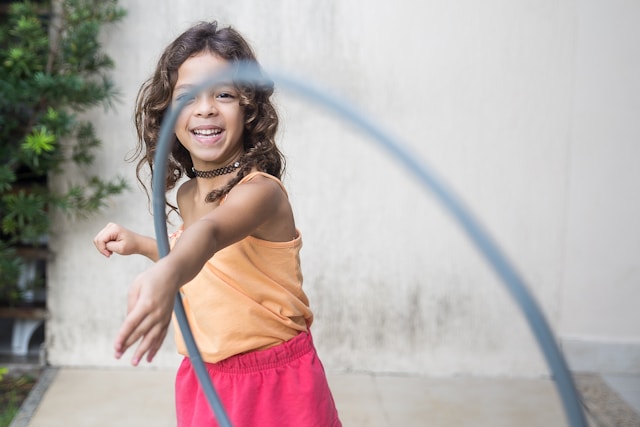Whitney Houston sang the lyrics, “The children are our future.” However, it is easy for the youngest and most vulnerable members of society to get the short end of the stick when adults stick to deadlines and rent payments. Cultivating a community that cherishes children requires the active participation of people of all ages. What can you do and how can you get involved in your neighborhood? Consider these five creative ideas to make children’s lives better.
1. Improve road safety
Your children will naturally want to spread their wings and become more independent as they get older, but they need the right infrastructure to do so. Unfortunately, a simple trip to the playground down the street is fraught with danger, as many rural roads have no shoulders and driving in city traffic challenges even adult professionals.
Improving pedestrian traffic infrastructure helps children in two crucial ways. One, it makes it safer for them to go to the park or their best friend’s house. Second, it mitigates climate change, which poses unknown threats well into adulthood. People are already feeling the effects, and fossil fuel-based transportation is one of the biggest contributors to global greenhouse gas emissions.
Many parts of the United States could benefit from the example of China, which has made significant progress in greening urban transportation systems in recent years. Wide, tree-lined pedestrian paths run parallel to the roadways, keeping cyclists and walkers safe. Trees also absorb carbon from the atmosphere, combating the urban heat island effect.
Such improvements also benefit small businesses. Think about it: you’re not shopping at 75 miles per hour, but pedestrians drive impulse sales. You can advocate for such improvements by attending your city or town’s planning and zoning commission meetings or even running for office on the board. Attending networking events with leaders involved in such projects and writing letters to the editors of local newspapers are two additional ways to promote and build interest.
2. Create safe neighborhood spaces
Improving roads reduces traffic danger, but does not eliminate predators. However, safe neighborhood zones make walking to class safer for little ones while building community.
Security expert Gavin de Becker describes such a scenario in his book ‘Protecting the Gift’. Every school morning, a collection of parents in a city neighborhood stands guard outside the door, accompanied by shopkeepers and other adults considered safe.
Implementing this change requires networking with your neighbors. Consider joining forces with a group like the Rotary Club or putting up flyers to generate interest on community message boards. You might even involve the local police. For example, businesses and individuals that want to be a refuge where children can go if they feel unsafe walking outside can undergo a background check and put up a window sticker indicating their participation.
3. Participate in family-friendly events
Do you want an easy way to get to know your neighbors? Steal a tip from the pandemic and pull your grill around the front of your house. The wonderful aroma is sure to spark a conversation or two. From there you join forces. Host a neighborhood potluck where people of all ages can mingle and offer fun games for the little ones.
Such events serve a double duty. They help you learn who is safe while building community spirit. In addition, they give your youngest family members the opportunity to develop their social skills by meeting new friends in a safe environment.
4. Upgrade your local playground with shade
Playing outside is essential for your child’s physical, mental, emotional and social development. However, it is more difficult to do this when climate change brings more intense UV rays, especially during the part of the year when they have the most time to play: the summer holidays.
One of the best improvements you can make to your local playground is adding shade. The right cover can reduce UV rays by as much as 97%, protecting your children from the sun during the hottest parts of the day. It also provides shelter from sudden rain showers and gives adults a more comfortable place to watch their children play.
5. Get involved with local schools
Finally, schools almost always need additional volunteers to supervise field trips and recess, and an additional adult presence in the classroom can improve behavior and learning outcomes. Goodness flows both ways. School staff can often refer families with specific needs to community resources that can help.
You can get involved by attending local school board meetings. You can also volunteer as a classroom assistant or supervisor. You will often make your child happy and at the same time strengthen ties with the community.
Care for children in your community
As the African saying goes, it takes a village to raise a child. With the five creative ideas above, you can help build such a system in your community.
Little ones rely on adults to meet their needs and teach them how to follow a positive path. Let your example be the light that guides them to a better future.
 Author biography
Author biography
Oscar Collins is editor-in-chief of Modded, where he writes about health and fitness. Follow him on Twitter @TModded for regular updates on his work, and subscribe to Modded Minute for more!





